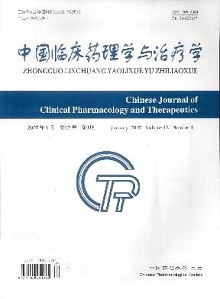Feasible study on sacroiliac joint internal injection performed under Doppler guidance
JIANG Feng, MEI Yan, FEI Yi-li, SHAO Li-min, YAO Chen, SHAO Yong-liang, SHI Jia
2007, 12(1):
111-115.
 Asbtract
(
160 )
Asbtract
(
160 )
 PDF (207KB)
(
495
)
References |
Related Articles |
Metrics
PDF (207KB)
(
495
)
References |
Related Articles |
Metrics
AIM: To investigate and comparatively observe the feasibility, security and effectiveness of Doppler guidance for therapeutic intra-articular sacroiliac joint injections with compound betamethasone in patients with sacroiliitis (grades Ⅱ-Ⅲ). METHODS: 71 cases with sacroiliitis were randomized into 3 groups:24 in Doppler group (DP), 23 in CT group and 24 in control group.DP and CT group were injected with compound betamethasone (7 mg/mL) into sacroiliac joints in a different guided way and followed up for 90 days.We recorded the related indexes of DASDAI, BASMI and BASFI on 1st, 7th, 30th, 60th and 90th days before and after treatment, and simultaneously measured the finger tips distance, Patrick test “4” and the scores of VAS to sacroiliac joints press. RESULTS: There was statistical difference when DP and CT group were compared with control group (P<0.05) in the indexes of DASDAI, BASMI, BASFI, experiment like number “4” and sacroiliac joints press after 1st, 7th and 30th days' treatment. There was also statistical difference in the comparison of finger tips distance after 1st, 7th and 30th days' treatment (P<0.05).But there was no statistical difference when DP was compared with CT during the 90 days' follow- up.In 47 patients with percutaneous puncture, 2 of DP and 1 of CT failed, the failure rates were 8.3 % and 4.6 %, respectively (P ≥0.05).1 of CT and 1 of control group discontinued observation because of abnormal re-laboratory data.1 of DP, 1 of CT and 2 of control group failed to be followed up. CONCLUSION: This initial experience suggests that with a comparison to CT guidance Doppler-guided therapeutic injection with compound betamethasone to sacroiliac joints is safe, rapid, easy and suitable to be widely used in the lower-level hospital and poverty patients.


